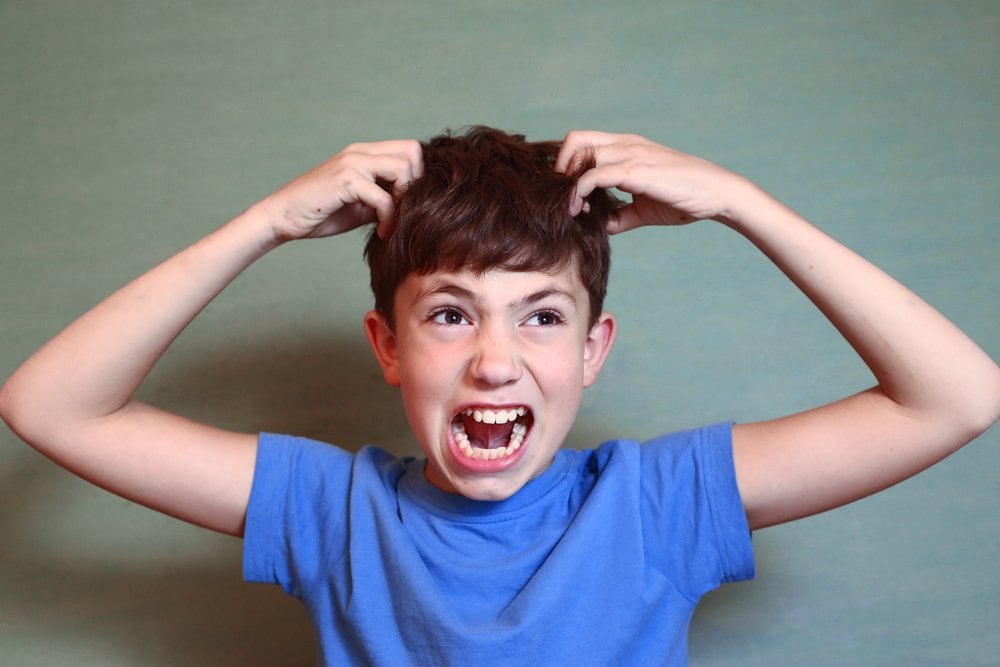Sharing Is Not Always a Good Thing — Prevent the Spread of Head Lice
 Do your kids like to take selfies with their friends? What seems like sharing innocent fun can actually share head lice.
Do your kids like to take selfies with their friends? What seems like sharing innocent fun can actually share head lice.
According to the Centers for Disease Control and Prevention, lice are most commonly spread by direct contact (head to head) but sometimes it can be spread by sharing items that touch the hair (combs, brushes, caps, headphones, scarves, hats, coats, etc.). Lice move by crawling — they cannot hop or fly. Dogs, cats and other pets do not play a role in the spread of head lice.
Lice live less than 48 hours off of your body. They need the warmth of your body and the blood supply.
Prevention
- Avoid head to head (hair to hair) contact during play and other activities.
- Do not share anything that touches the hair — this includes but is not limited to — clothing, combs, brushes, towels and headphones.
Signs and symptoms
- Tickling feeling of something moving in your hair.
- Itching caused by an allergic reaction to the bites of the head louse.
- Irritability and difficulty sleeping; head lice are most active in the dark.
- Sores on your head caused by scratching. These sores can sometimes become infected with bacteria found on your skin.
Treatment
Many head lice medications are available at pharmacies without a prescription. If crawling lice still are seen after a full course of treatment, contact your health care provider.
Do not use a combination shampoo/conditioner or conditioner before using lice medicine. Do not re-wash hair for one to two days after the lice medicine is removed. Doing either may decrease the effectiveness of the medicine.
Do not use extra amounts of medication or multiple lice medications unless instructed to do so by your health care provider. Keep all lice killing medications out of the eyes. If exposure occurs, immediately flush medication out of eyes.
Physical removal of lice
- Split hair into four sections by parting the hair down the middle and above each ear forming a "+" across the scalp.
- Working one section at a time, take a small amount of hair and use the nit comb to comb through the hair.
- Remove any adult lice, nymphs or nits found.
- Be sure to clean off comb by using a toothbrush in water to remove lice from comb.
- Completely rinse hair once removal is done.
- Have the infected person put on clean clothing after the treatment.
- Check the hair and comb with a nit comb to remove nits and lice every two to three days may decrease the chance of self-reinfestation. Continue to check for two to three weeks to be sure all lice and nits are gone.
Besides treating the person with lice, all members of the household and close contacts should be checked. You should also:
- Use hot water (130°F) laundry cycle and the high heat drying cycle on all clothing, bed linens and other items that the infested person wore or used during the two days before treatment. Items that are not washable can be dry cleaned or sealed in a plastic bag and stored for two weeks.
- Soak combs and brushes in hot water (at least 130°F) for five to 10 minutes.
- Vacuum the floor and furniture.
If you would prefer to have an infestation taken care of by professionals, there are businesses that specialize in getting rid of lice.
Lifecycle of Lice
- Eggs: Head lice eggs are known as nits. They are hard to see and often confused with dandruff or hairspray residue. They are laid by the adult female and are attached to the base of the hair shaft. They are 0.8 mm by 0.3 mm, oval and usually yellow to white. They take about a week to hatch (six to nine days) and then are known as nymphs.
- Nymphs: They look the same as an adult but are about the size of a pinhead. Nymphs mature after three molts and become adults. This takes about seven days.
- Adults: Adults are about the size of a sesame seed, have six clawed legs and are tan to grayish-white. Females are usually larger than males and lay up to eight nits per day. Adult lice can live up to 30 days on a person’s head but will die within one or two days if they fall off.